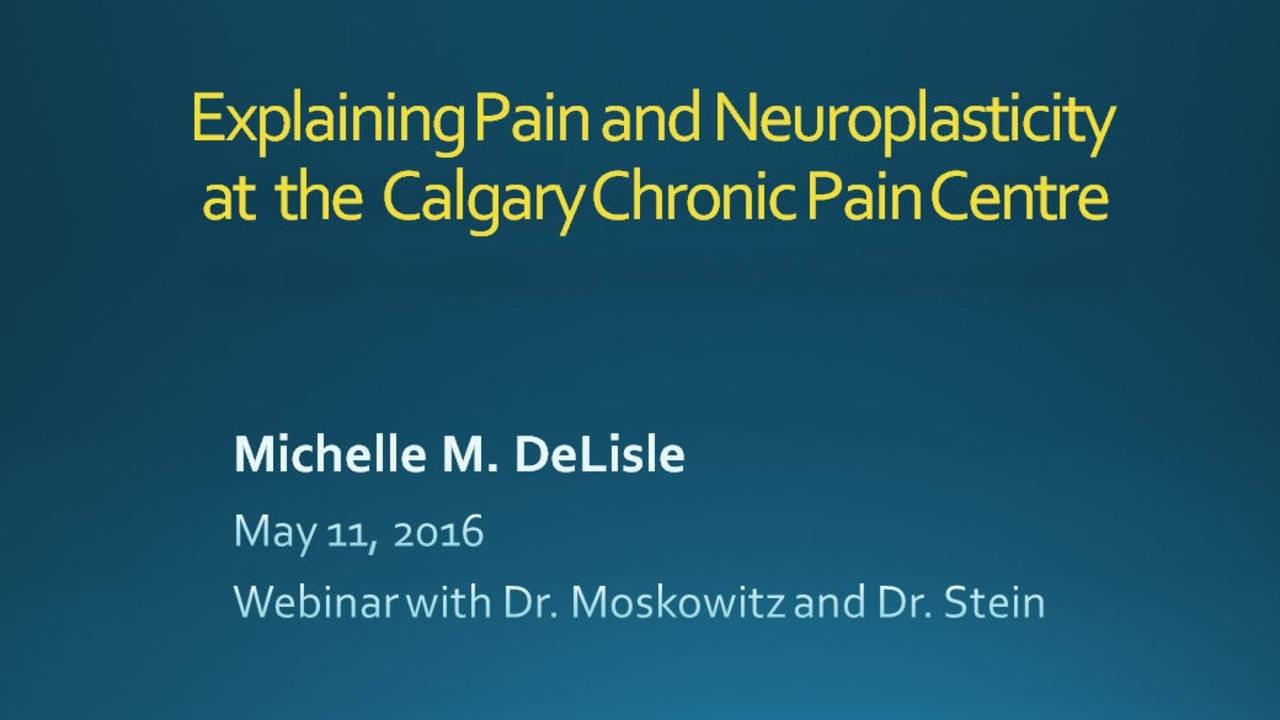How Does Neuroplasticity Help in Pain Management? By Dr. DeLisle
May 11, 2016
This presentation by Dr. Michelle M. DeLisle was broadcast on May 11 during the same event with Dr. Moskowitz and immediately following the talk by Dr. Moskowitz. In this talk, Dr. DeLisle reinforced many of Dr. Moskowitz's comments as well as added some further insight into the area of neuroplasticity and chronic pain management from a Canadian clinic perspective.
About Michelle M. DeLisle PhD:
Michelle M. DeLisle, PhD, R Psych, first began working at the Calgary Chronic Pain Centre (CPC) in 2007 as part of her post-doctoral internship. Since graduating from Queen’s University in 2008, she has worked as a Clinical Psychologist at CPC. She has strong research interests and has co-authored 9 research articles and 2 book chapters on a wide range of topics, including leisure motivation, anger management, depression, and suicide risk. She is currently engaged in a number of projects related to treatment in the chronic pain field.
You may watch the video recording of Dr. DeLisle's presentation below. Click on the Full-Screen button in the bottom right-hand corner to expand the size.
Also available is the audio-only version of Dr. DeLisle's presentation as well as a copy of her slides in PDF format. You may listen to her presentation by clicking on the audio player above this text, or you may download it to your computer or mobile device by selecting it from the Downloads section on the right-hand side of this page. The PDF of her slides may also be downloaded to your computer by clicking on the file in the Downloads section.
Included in This Recording
Dr. Michelle DeLisle presents a short summary of how to use the Explain Pain approach to neuroplasticity and persistent pain.
- When the brain is trying to figure out what is going on the brain relies on context (previous experience, cultural factors, social factors, beliefs, knowledge, logic) influences the brain’s interpretation of sensory information from the body to determine if the signal is dangerous or not. If dangerous, the brain turns on pain to get our attention.
- DIMs (Danger in Me) and SIMs (Safety in Me) are danger or safety signals that can come from things you hear/smell/taste/touch/see, things you do/say/think/believe, places you go, people in your life, or things happening in your body.
- DIMs can increase pain and SIMs can decrease pain.
- Relaxation and awareness are the first steps to facilitating neuroplastic change.


